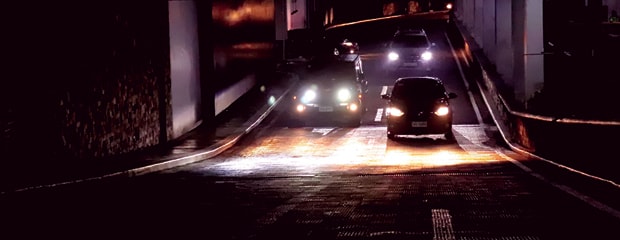
Headlights have an average lifespan of 2,000 to 3,000 hours, roughly 90,000 miles, so we seldom change them. What makes headlights last so long? Although today's offerings consist of many different, new headlight technologies, it all began with two basic types. Here's the rundown from our Courtesy Lincoln service team.
Standard Headlights
Dating back to the beginning of headlight manufacturing, standard headlights contained a bulb situated inside a reflective box or case. The bulb faces forward, emitting light out of the assembly into the world. For decades, halogen remained the preferred bulb, and "standard headlight" still often implies halogen. Today, LED is fast becoming the new standard.
How do Halogen and LED Work?
Halogen bulbs contain the glass halogen and a tungsten filament in a small case of quartz crystal. Electricity passing through the tungsten causes it to heat and glow. The halogen gas combines with tungsten atoms as the filament glows and melts, redepositing tungsten onto the filament. This prolongs bulb life and prevents black buildup.
LED creates light via the re-combination of electrons and electron holes after electricity passes through a semiconductor. LED uses less energy than halogen, burns brighter and tends to lasts longer.